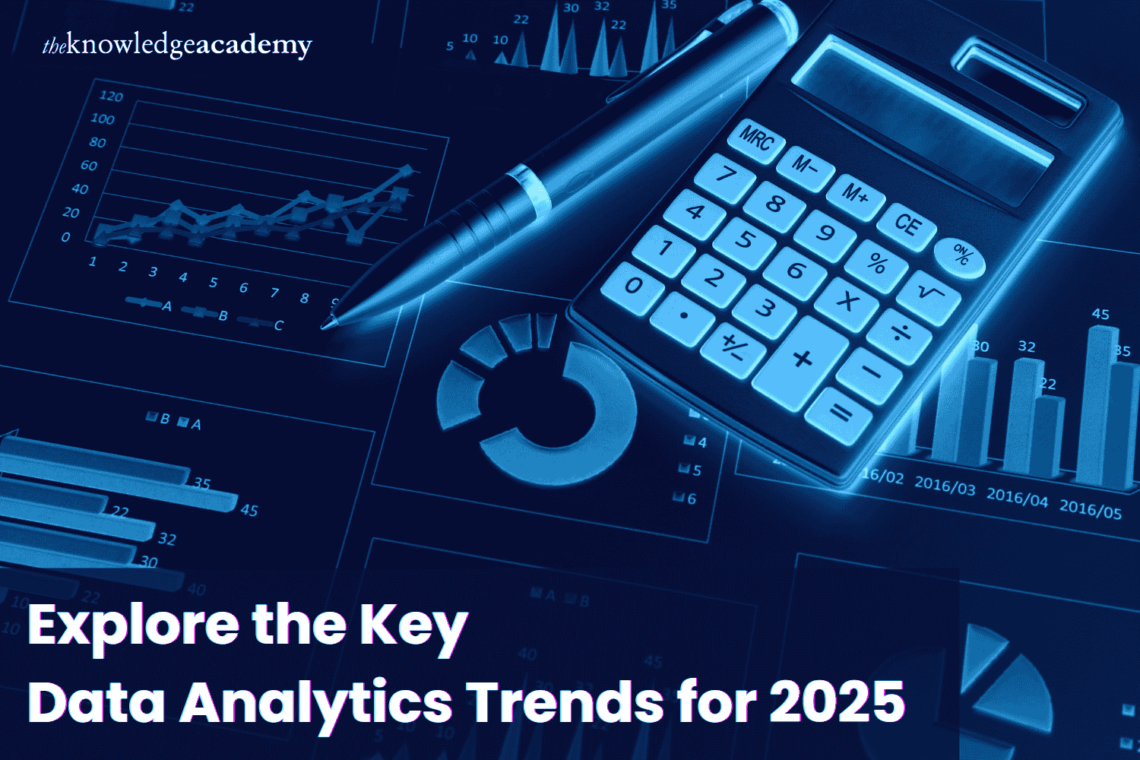Upgrade with the iQOO Z10R on Easy EMIs and make your festive season brighter
- August 28, 2025
- Tech
Upgrade with the i
Pune, August 25: The festive season is the perfect time to purchase a… Read More

What’s the future of data analytics in 2025? This question excites businesses and professionals who rely on smart, data-driven decisions. With new trends reshaping the field, Advanced Data Analytics Tools are becoming smarter and more powerful. Whether you are interested in pursuing Advanced Data Analytics Courses, staying updated with the latest trends is essential. Exploring new age Data Analytics Tools can also give you a competitive edge in this dynamic field. Let us explore these trends and see how they shape the future.
AI is transforming the data analytics process by enhancing its intelligence and accessibility. Advanced AI algorithms enable the visualisation and analysis of data at unparalleled scales. This results in quicker insights and more flexible decision-making processes. Organisations are witnessing an increase in production efficiency, while workers indicate enhanced productivity because of AI integration in analytics processes. The trend of AI-driven analytics drives the creation of adaptive solutions that respond to fluctuating data, enabling firms to maintain a competitive edge.
Unlike traditional approaches, which focus on improving algorithms, data-centric AI prioritises organising and refining the quality of data itself. This trend ensures the development of AI models using organised, high quality data, so enhancing the accuracy and reliability of analytical outputs. It employs machine learning to improve data management systems, allowing enhanced insights and resource efficiency. This tendency is crucial for sectors managing extensive, varied information to ensure consistent and valuable analysis.
Metadata-driven data fabric is revolutionising the management of complicated and fragmented data inside businesses. Using metadata, these systems extract, learn, and act on useful information inside datasets, therefore reducing management tasks. As more organisations adopt this approach, data fabric systems will enhance data sharing, integration, and automation, becoming a cornerstone of modern analytics strategies.
Edge computing is excellent in data analytics, processing data at or near its source instead of relying on centralised systems. This reduces latency, minimises bandwidth usage, and facilitates real-time analytics, essential for time-sensitive industries such as healthcare, automotive, and manufacturing. Edge computing enhances analytics speed while improving data accuracy and security via local storage and processing. As IoT devices expand, this tendency will continue, providing companies with a more dispersed and efficient method for managing data.
Artificial intelligence and machine learning blends with data exploration tools to simplify and automate the process of gaining insights in augmented analytics. These tools enable people who need more technical skills to conduct sophisticated analyses by managing complex activities such as data preparation, anomaly detection, and insight generation. This movement is democratising access to analytics, allowing teams in diverse areas to make data-driven choices, thereby enhancing corporate efficiency and agility.
The future of data analytics also includes a stronger emphasis on real-time collaborative analytics. This trend facilitates multiple access, sharing, and analysis of data by several teams in real time across various locations and platforms. Collaboration technologies combined with analytics systems improve team collaboration, facilitating expedited and more unified decision-making. Industries like banking, shipping, and e-commerce are using collaborative analytics to diminish operational barriers and promote a cohesive approach to problem-solving. As remote and hybrid work models gain prominence, this trend will be important in facilitating seamless data communication.
For businesses, sustainability is becoming central, and analytics are more focused. Analytics plays an integral role in achieving these objectives. By assessing and mitigating their environmental impact, organisations use sophisticated analytics to monitor carbon footprints, maximise resource utilisation, and establish sustainable supply networks. As governments and consumers exert more pressure for sustainable behaviours, analytics tools are advancing to provide specialised modules that focus on environmental impact assessment and mitigation techniques.
Data analytics in 2025 is set to revolutionise how we process, understand, and act on data. From AI-powered tools to sustainability-focused analytics, these trends are shaping a smarter and connected future. Staying ahead and adapting to these changes is crucial for success. With free resources offered by The Knowledge Academy, you can stay ahead and make the most of these innovations.